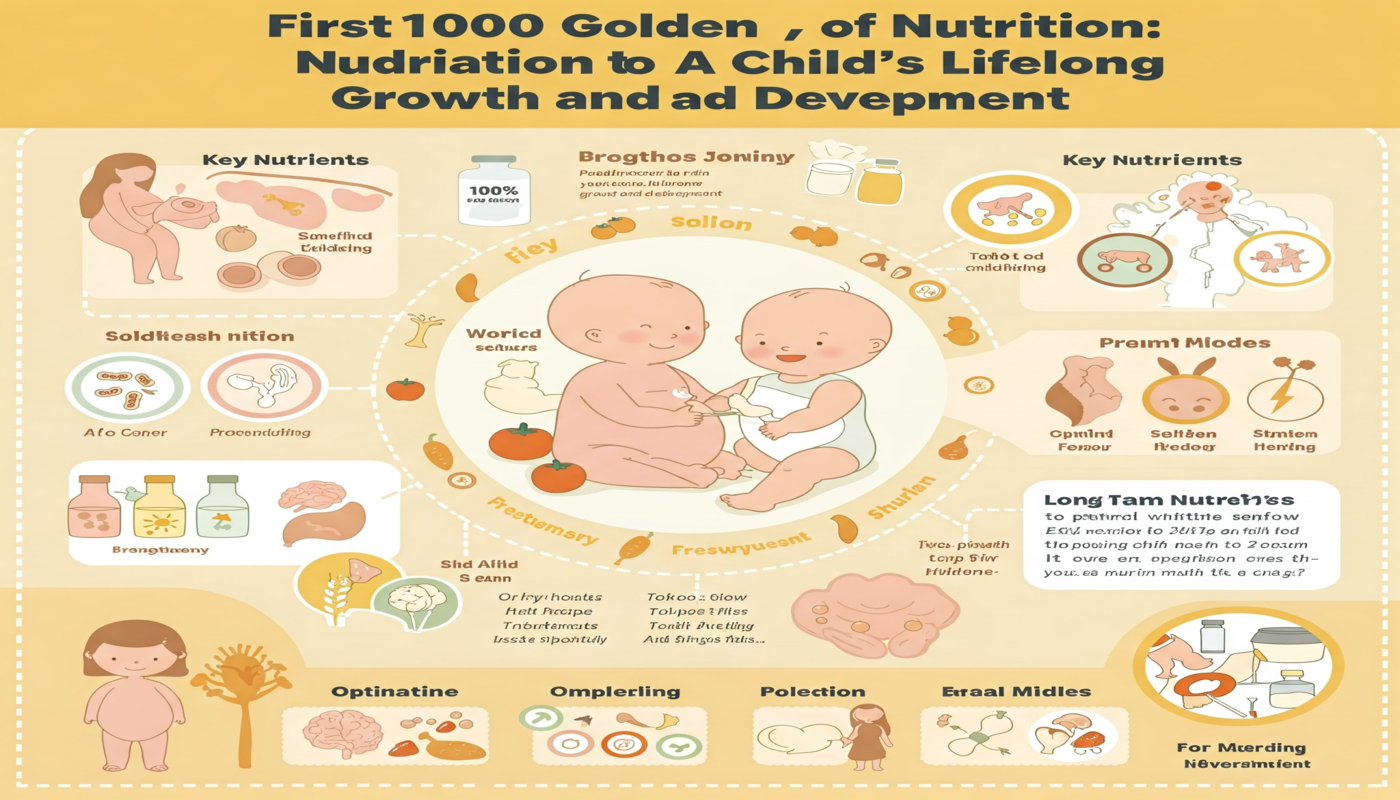
New research in to the fields of neuroscience and early childhood development suggests that nutrition during a child’s first 1,000 days builds the foundation for a child’s physical, social, emotional and cognitive development. The concept of “1000 days” is 9 months of pregnancy plus first 2 years of life during which optimal breastfeeding (for first 6 months of age) and timely and appropriate introduction of complementary feeding (at 6 months of age) are extremely important.
First 1000 days of nutrition are divided into 4 stages: 1) 9 months of pregnancy. 2) First 6 months of Exclusive breastfeeding. 3) 6 to 12 months – Breast feeding with complementary feeding. 4) 1 year to 2 year- Transition to family diet.
During pregnancy development of brain and neural networking occurs at astonishing speed. A healthy, balanced diet before conception and during pregnancy assists the growing fetus and also helps mother to create a future body reserve for breast feeding. It is very important for mothers to get adequate calories, protein and fatty acids as well as micro nutrients like iron, calcium, copper, folate, zinc and iodine from variety of food as well as medical supplements as indicated by doctor to avoid their deficiencies which can lead to delayed neurodevelopment and growth failure in child.
After delivery exclusive breastfeeding helps balance nutrition throughout the first six months. Breast milk is a natural super food, all the nutrients a newborn needs are in proper amount in breast milk. It helps protects against allergies, infectious diseases (respiratory tract & gastrointestinal tract infections), lowers the risk of overweight/obesity as well as chronic diseases (diabetes, heart diseases, asthma & cancer). Breast milk also improves cognitive and motor development. Babies who are exclusively breastfed have 8.3 points of IQ advantage over those who are not breastfed.
After six months, Infant’s need for energy and nutrients starts to exceed what is provided by breast milk, and complementary feeding becomes necessary to fill the energy and nutrient gap. The American Academy of Pediatrics (AAP) advises that semi-solid foods can be started when an infant is six months old as complementary feeding is important for oral motor skill development, maturation of digestive system, development of taste and social attachment. If introduction of complementary feeding is delayed, then the infant may become a poor chewer and may be poor in eating solids later.
After 1 year till 2 years of age: Transition to family diet. Baby can eat solid food from family plate, which becomes child’s main source of energy and nutrition. A child can take between three quarters to one cup of food three to four times a day, plus one to two healthy snacks between meals. The WHO recommends breastfeeding to be continued as much as child wants, until at least 2 years of age.
The first 1000 days are a critical period, during which the nutrition lays the foundation for a child’s future health, impacting their ability to grow, learn, and thrive.
- Dr. Dhyey Pandya
- MBBS, MD(Ped), DrNB(Neo)
